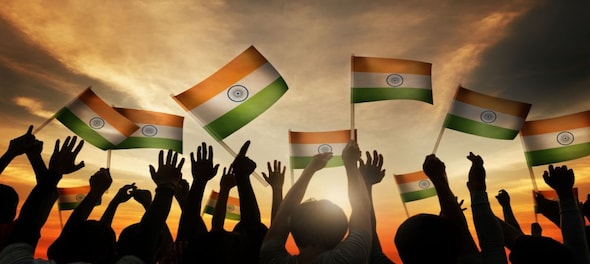
What’s the trigger?
The dinner invite from President Droupadi Murmu to G20 heads of state has been issued with the header ‘President of Bharat,’ unlike the usual ‘President of India.’ Meanwhile, sources have also told CNBC-TV18 that the government is likely to table a bill to ‘rename’ India as Bharat during the upcoming special Parliament session.
While more details about it are unclear, any constitutional amendment in this regard has to begin with Article 1 of the Constitution. It is also uncertain if the government intends to restructure the positioning of words in the article, add new words, or scrap some after all.
Also read: Govt to bring resolution to rename India as Bharat in Parliament Special Session, say sources
What Article 1 of the Indian Constitution reads?
‘India, that is, Bharat is a Union of States’
Big Question: Does the Constitution allow for the names ‘India’ and ‘Bharat’ to be used interchangeably?
Former ASG and senior Supreme Court lawyer Indira Jaising said that the names ‘India’ and ‘Bharat’ cannot be used interchangeably as a number of articles mention the President of India, not Bharat. She said that the government needs to amend Article 1 first.
Nipun Saxena, a lawyer at the Supreme Court said, “The names cannot be used interchangeably as the Article 77, which deals with Conduct of Business uses the expression ‘Government of India.’”
PDT Achary, Former Secretary General of the Lok Sabha, said, “If the government wants to use only Bharat, then several articles of the constitution would have to be amended. Article 52 says ‘President of India’ and not President of Bharat. It denotes a particular post. Similarly, changes would have to be made to sections relating to the Chief Justice of India, Supreme Court of India and others.”
Dr Sujay Kantawala, senior lawyer at the Bombay High Court took a contrarian view. He said, “If Article 1 mentions ‘India, that is, Bharat as a Union of states, then India and Bharat are synonymous with each other. Then, there is nothing wrong in the invitation being issued and it is perfectly in order.” He also highlighted, “Even in our national anthem, the phrase Bharat Bhagya Vidhaata is mentioned. Every currency note mentions Bharatiya Reserve Bank.”
How did Article 1 come to be adopted?
Members of the then Constituent Assembly met on September 18, 1949 (Sunday). Dr. Rajendra Prasad, then the President of the Constituent Assembly, said that the House will take up Article 1, which was moved by B.R. Ambedkar. Prominent members had sought that the newly independent nation be renamed Bharat or Bharatvarsha, as it would, in a way, unshackle it from its colonial past and give it a name befitting of its history and culture.
HV Kamath moved two amendments:
Bharat, or in the English language, India, is a Union of states
or
Hind, or in the English language, India, is a Union of states
Kamath argued that:
1. Bharat or Bharatvarsh or Bharatbhumi took their stand on the fact that this is the most ancient name of this land.
2. Ambedkar says ‘India, that is, Bharat.’ He has recast it in another form, which relates to the language, the phraseology, and constitution of the sentence.
3. The expression ‘India, that is, Bharat’ in the Constitution is somewhat clumsy.
4. It would be much better if this expression, this construction were modified in a constitutionally more acceptable form.
BR Ambedkar, Chairman of the Constitution Drafting Committee, said, “Sir, this matter was debated at great length last time…it was not possible to come to a decision as to whether the word "Bharat" should be used after the word "India" or some other word, but the whole of the article including the term "Union" — if I remember correctly — was debated at great length. We are merely now discussing whether the word "Bharat" should come after "India". The rest of the substantive part of the article has been debated at great length.”
Seth Govind Das highlighted that:
1. No mention of India is to be found in the Ved.
2. ‘Bharat’ is mentioned in the Vedas, the Upanishads the Brahmanas.
3. Vedas, the Upanishads the Brahmanas came to India and referred to this country as Bharat.
4. Fought the battle for freedom under the leadership of Mahatma Gandhi by raising the slogan ‘Bharat Mata Ki Jai.’
Har Govind Pant highlighted that, “We must know that this name (India) was given to our country by foreigners who having heard of the riches of this land were tempted towards it and had robbed us of our freedom in order to acquire the wealth of our country. If we, even then, cling to the word 'India', it would only show that we are not ashamed of having this insulting word that has been imposed on us by alien rulers. Really, I do not understand why we are accepting this word.’’
How did the meeting end?
Kamath's amendment, ‘Bharat, or, in the English language, India, shall be a Union of States,’ was defeated. Fifty-one members voted against it, in contrast to thirty-eight who voted in favor of it. Ambedkar's original Article was adopted.
Check out our in-depth Market Coverage, Business News & get real-time Stock Market Updates on CNBC-TV18. Also, Watch our channels CNBC-TV18, CNBC Awaaz and CNBC Bajar Live on-the-go!


PM Modi visits Ram Mandir for first time since 'Pran Pratishtha', offers prayers before roadshow
May 5, 2024 8:59 PM
Visiting temples, obliging selfie requests, jabbing rivals – Kangana Ranaut is wooing voters on campaign trail
May 5, 2024 8:23 PM

